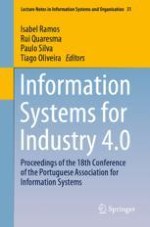2019 | OriginalPaper | Chapter
System Theoretic Process Analysis: A Literature Survey on the Approaches Used for Improving the Safety in Complex Systems
Author : Saulo Rodrigues e Silva
Published in: Information Systems for Industry 4.0
Publisher: Springer International Publishing
Activate our intelligent search to find suitable subject content or patents.
Select sections of text to find matching patents with Artificial Intelligence. powered by
Select sections of text to find additional relevant content using AI-assisted search. powered by
